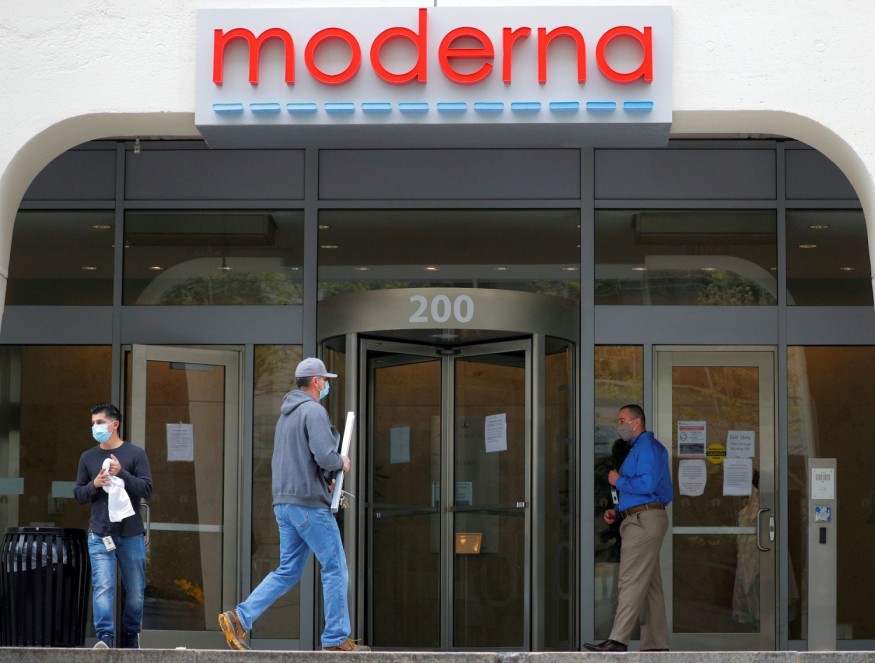On Monday, November 16, US biomedical company Moderna revealed that its groundbreaking COVID-19 vaccine was almost 95 percent successful, representing a second big advance in the search to end the pandemic.
After the American pharmaceutical giant Pfizer and its German affiliate BioNTech last week claimed that their vaccine was 90 percent successful, Moderna published early findings from a clinical trial of more than 30,000 participants.
Both frontrunners focus on modern technologies that utilize engineered copies of "messenger RNA" molecules to hack into human cells and transform them into vaccine-making factories efficiently.

"This positive interim analysis from our Phase 3 study has given us the first clinical validation that our vaccine can prevent COVID-19 disease, including severe disease," said Moderna CEO Stephane Bancel.
"The light at the end of the tunnel just got even brighter," tweeted Atul Gawande, a member of US President-elect Joe Biden's coronavirus advisory board and a surgeon at a Harvard-affiliated hospital.
The light at the end of the tunnel just got even brighter. We may now have multiple, very effective vaccines distributing widely in spring and summer. Now we must pull together to get everyone we can through that tunnel alive and with jobs intact. https://t.co/WHYvPdKgPW — Atul Gawande (@Atul_Gawande) November 16, 2020
Moderna plans to send emergency clearance applications within weeks in the US and worldwide and claims it intends to have about 20 million doses available for shipping in the US before the end of the year.
They said their target year to deliver about 500 million to a billion doses globally would be on 2021.
With more than 1.3 million deaths since the virus appeared in China late last year, global Covid-19 infections have surged beyond 54 million.
Secretary of Health and Human Services Alex Azar told CNBC on Monday that the U.S. The Food and Drug Administration will clear the coronavirus vaccines from Pfizer and Moderna for immediate use as soon as possible.
Immensely Exciting
The Moderna vaccine, co-developed by the U.S. National Institutes of Health, is delivered 28 days apart in two doses, and the preliminary findings are focused on 95 of the 30,000 Covid-19 participants that fall sick.
Of the 95, 90 were in the placebo category of the sample, and 5 were in the group consuming the medication, named mRNA-1273, which corresponds to a 94.5 percent efficacy score.
Eleven persons had become critically sick, many of which were in the placebo community.
The US government has spent about $2 billion in funding for growth, production, and future distribution of the vaccine under its Operation Warp Pace.
The bulk of side effects of the Moderna vaccine is categorized as mild to moderate.
About 3 percent of persons have injection site discomfort identified as serious after the first dose.
About 10% had nausea, 9% had muscle discomfort, 5% had joint pain or headaches, 4% had other symptoms, and 2% had redness at the injection site, among the serious side effects during the second dose.
According to a statement, these harmful events were "short lived."
"This news from Moderna is tremendously exciting and considerably boosts optimism that we will have a choice of good vaccines in the next few months," said Peter Openshaw, a professor of experimental medicine at Imperial College London.
Moderna has announced, crucially, that its vaccine would stay stable for 30 days at normal refrigerator temperatures from 2 degrees Celsius to 8 degrees Celsius (36 degrees Fahrenheit to 46 degrees Fahrenheit).
The business added that it could be stored at normal freezer temperatures of -20 degrees Celsius (-4 degrees Fahrenheit) for up to 6 months in long-term storage.
On the other side, Pfizer's vaccine has to be processed under deep-freezer conditions of -70 degrees Celsius (-94 degrees Fahrenheit), which could hinder supply, especially in less developed countries chain logistics.
On the drawback, the vaccine from Moderna has around 3 times more genetic content per dose than its equivalent from Pfizer, Zoltan Kis, a research associate at the Potential Vaccine Manufacturing Center of Imperial College, said.
This will increase the cost of manufacturing and make it more challenging to scale up.
Question Remains
Both vaccinations' positive outcomes are seen as a confirmation of mRNA science that has never been licensed by regulatory authorities before.
It functions by supplying genetic guidance to human cells to produce a coronavirus surface protein, which prepares the immune system to recognize the actual virus.
A longer method that typically includes producing a weakened version of a virus is developing a conventional vaccine.
It is not yet known how long the safety from either the Moderna or Pfizer vaccines would continue, nor how well they perform for the aged, the highest-risk age demographic of Covid-19.
Another unanswered concern is why those subjected to the infection are discouraged from spreading it to other persons, even if the vaccine protects the patients from the disease.
Check out more news and information on COVID-19 on Science Times.
© 2025 ScienceTimes.com All rights reserved. Do not reproduce without permission. The window to the world of Science Times.











